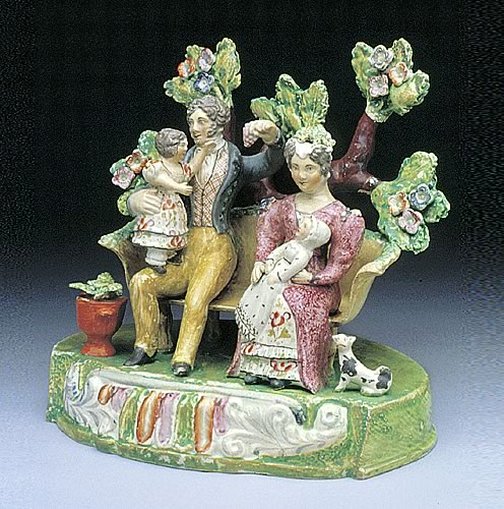The figure on the left has bright glossy enamels and it glows! The figure on the right, on the other hand, is ho-hum. Certainly not the worst enamels I have ever seen, but they appear yukky, dull, and worn.
All this can be fixed with overpainting. The restorer simply puts a fresh coat of glossy stuff on top. The result is that you are looking at modern material, brand new paint. At times, it is needed and justified. Some flaking is almost commonplace and sympathetic retouching of the bare area is, to my mind, fine. The bad spot vanishes and no longer draws the eye. But when the majority of a figure is bad.....I go and shop for something else.
Enameling was in its day a skilled process and required multiple firings. Some colors needed higher firing temperatures than others, so these colors were painted on first and the piece would go into the kiln. Next the process would be repeated with colors requiring a little less heat. I am not sure how many firings each figure needed, but I wouldn't be surprised to learn that it was usually at least three. Extraordinary skill was required because there was no way to measure kiln temperature. There were assorted ways of assessing the temperature--at best educated guesses--but there was no thermometer to measure that extreme heat. Very easy for things to go wrong, and they did. Enamels might be overfired or underfired, resulting in discoloration. Or the very mix of the enamel could result in poor adherence. The bottom line is that perfect, glowing enamels are a minor miracle, and that's why I admire them so much.


















